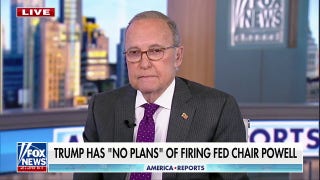The USPS will not be saved with more money
The USPS's problems cannot be solved with tens of billions of dollars from the taxpayers
The coronavirus has left its mark on every corner of the economy and has affected many businesses more than others. But unlike restaurants, airlines, and other industries that were doing well, the United States Postal Service’s (USPS) financial situation was dire long before the virus arrived.
So far, Congress is throwing more money at the agency without demanding a single reform, which will only exacerbate an already grim outlook.
THE LOCKDOWN DEMOCRATS -- BLUE STATES NOW FACING A CHANGE OR DIE CHOICE
In its second financial report of fiscal year (FY) 2020, the USPS posted a net loss of $4.5 billion, a 114.3 percent increase compared to the $2.1 billion loss in the second quarter of FY 2019. Already down $5.3 billion for FY 2020, the USPS is well on its way to its 14th consecutive year in the red. Since 2007, the USPS’s net losses total $83 billion. In FY 2019, the Postal Service ran an $8.8 billion deficit, a 125 percent increase compared to the $3.9 billion in FY 2018.
According to the Government Accountability Office (GAO), total unfunded liabilities and debt for the USPS in FY 2018 stood at $143 billion, double its annual revenue. The USPS is also a perennial name on GAO’s annual High-Risk List report, a designation the agency has held since 2009. In a May 7, 2020 report, the GAO highlighted that the USPS is on financial thin ice and reform can no longer wait. “Absent congressional action on critical foundational elements of the USPS business model, USPS’s mission and financial solvency are increasingly in peril,” said the report.
The USPS does not need more money, it needs to take the opportunity to get its fiscal house in order to withstand the long-term consequences of the COVID-19 crisis.
After the Coronavirus Aid, Relief, and Economic Security (CARES) Act provided a $10 billion line of credit at the Treasury, the USPS Board of Governors put together a request for $75 billion in the next relief bill, consisting of another $25 billion line of credit, $25 billion in emergency appropriations, and $25 billion to modernize facilities and the vehicle fleet.
That proved to be too much even for the most rabid supporters of the USPS, as House Speaker Nancy Pelosi’s $3 trillion Health and Economic Recovery Omnibus Emergency Solutions (HEROES) Act includes one-third of that request, $25 billion for “revenue foregone,” some of which can be used for equipment related to protecting workers from the virus.
UNEMPLOYMENT RATE, GOOD JOBS NEWS, TELL US THIS ABOUT CORONAVIRUS RECESSION
Just like the CARES Act, there is not a single word regarding reform in the HEROES Act. And the additional $25 funding is also not needed, according to the USPS FY 2020 Second Quarter report, which states the $10 billion loan is more than enough and the USPS “expects that it will have sufficient liquidity to continue operating through at least May 2021.”
The USPS does not need more money, it needs to take the opportunity to get its fiscal house in order to withstand the long-term consequences of the COVID-19 crisis.
Fortunately, not every lawmaker wants to pour money on the dumpster fire that is the USPS. Following the release of the GAO’s May report, Rep. Jim Jordan, R-Ohio, reiterated that “the Postal Service’s business model is failing, and simply throwing more of taxpayer’s hard-earned money at them won’t fix their problems.”
Senate Homeland Security and Governmental Committee Chairman Ron Johnson, R-Wis., requested on May 6, 2020, that the USPS provide “weekly revenue reports” in order to separate between the “USPS’s worst-case scenario projections and reality.”
The Trump administration has also been active in pushing for postal reform. The Treasury Department Postal Task Force 2018 Report, United States Postal Service: A Sustainable Path Forward, recommended that the agency refocus on its core mission of physical mail and package delivery; improve its ability to identify wasteful and inefficient practices; realign labor costs and practices with the broader labor market; review the Universal Service Obligation; and close and consolidate underperforming facilities.
GET FOX BUSINESS ON THE GO BY CLICKING HERE
Another essential reform would be to prioritize new work-sharing opportunities. This would allow the USPS to outsource the cost and risk of many activities that could more efficiently be performed by third-party private-sector logistics, processing, and delivery partnerships. The USPS would be able to avoid excess costs, reduce prices, and improve operational efficiency.
The USPS should also immediately establish a hiring freeze and determine how to reduce its excessive labor costs, which represent 80 percent of its expenses. Any other company would have done this long ago during its 14 consecutive years of losing billions of dollars.
The USPS has a business model that is structurally dysfunctional. Its problems cannot be solved with tens of billions of dollars from the taxpayers. Congress should be delivering sweeping changes to the agency to give it long-term fiscal sustainability, otherwise, taxpayers will be asked to deliver a very large bill.
Tom Schatz is President of Citizens Against Government Waste.
CLICK HERE TO READ MORE ON FOX BUSINESS




















